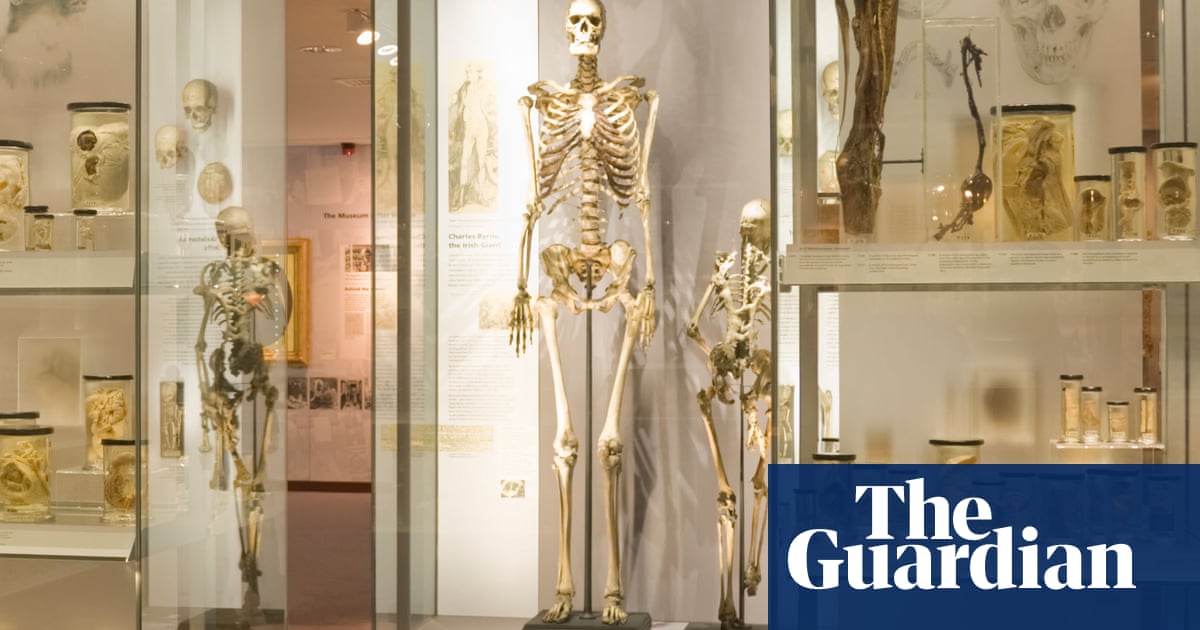
Husbands and fathers are never humiliated in these copies of The Canterbury Tales and treachery never triumphs. No one ever has sex in a tree or accidentally kisses someone else’s hairy bottom – and anyone who expects to read about adultery and farting at friars will be offered moral tales celebrating martyrdom and marital obedience instead.
Children in the 19th century were routinely presented with sanitised Victorian versions of Geoffrey Chaucer’s medieval masterpiece, and copies of these are now to go on public display for the first time at the Bodleian Library in Oxford.
“The idea of Chaucer as the father of English literature was really entrenched by the 19th century,” said Prof Marion Turner, curator of the exhibition, Chaucer Here and Now, which opens on 8 December. “He was seen as standing at the head of English literature and Englishness, and representing the nation.”
Writers and artists eulogised the medieval poet and presented the medieval period as a “beautiful, pre-industrial, iconic” time, she said, a time when life – especially for the poor – was much simpler. The Canterbury Tales were seen by Victorian educators and parents as a helpful setting for the teaching of religious and moral lessons. “There was a sense that British children in particular would really gain from understanding this part of their heritage; that it would help to make them into better people.”
However, some of the more eye-popping details in Chaucer’s tales were regarded as deeply unsuitable for young minds, so his work was heavily censored, however, to ensure his work was appropriate for children. One of the earliest retellings for children was written in 1833 by Charles Cowden Clarke, who stated his explicit hope that children will “become wise and good by the example of the sweet and kind creatures” found in the tales. He also points out that some of the stories “are of so coarse and indelicate a character as to be unfit for perusal”.
“So he just doesn’t bother with those,” said Turner. The “unfit” tales are those in which, for example, cleverness, lewdness and trickery are rewarded, the social hierarchy is inverted, a patriarchal figure of authority is dethroned, and women enjoy sex outside marriage. “The stories many Victorian adapters tell are the serious, religious, moral tales – which is an extremely skewed way of thinking about Chaucer,” said Turner. “The point Chaucer is making in The Canterbury Tales is: people will tell you different stories – or the same story in a very different way from a different perspective. And in order to have a clear understanding of the world, and of literature, you have to listen to lots of different kinds of stories and perspectives.”
The tales approved by Victorians typically included The Clerk’s Tale, about a rich man who saves a poor girl, Griselda, from poverty but makes her promise total obedience. “He tells her he’s going to murder their children and she has to agree to that,” Turner said. This monstrous and tyrannical treatment is, in fact, a ploy to test her stoicism and her vow to obey him, and she passes with flying colours. “It’s an awful story which today, people see as deeply problematic, but in the 19th century, many people thought Griselda was a model of how to behave.”
Many of the 19th-century adaptations were by female writers, for the aspirations and desires of other respectable, educated women. “One famous Victorian woman adapter, Mary Haweis, wrote that her work was aimed chiefly at her son – ‘for the use and pleasure of my little Lionel’ – and that mothers should read their children fragments of The Canterbury Tales. She feels, Turner added, that Chaucer has “a kind of religiosity, a morality and a sense of beauty that are good things for children to read about and understand”.
To make these intensely moral, devout incarnations more appealing to Victorian children, one editor, F J Furnivall, told his readers that the poet was not only mischievous and clever at school but was “plucky and slippy at football, hockey and other games”. He added craftily: “Cricket was not yet known.”
“That’s all totally made up to get children to identify with Chaucer and admire him,” said Turner.
To go with the exhibition, she has written a book, Chaucer Here and Now, about the varying ways readers have responded to The Canterbury Tales over the centuries.
David Matthews, a professor of medieval literature at the University of Manchester, said: “We tend to think of Chaucer in a vague way as being associated with the naughty bits, the fabliaux tales. There’s an awful of Chaucer that isn’t like that.”











